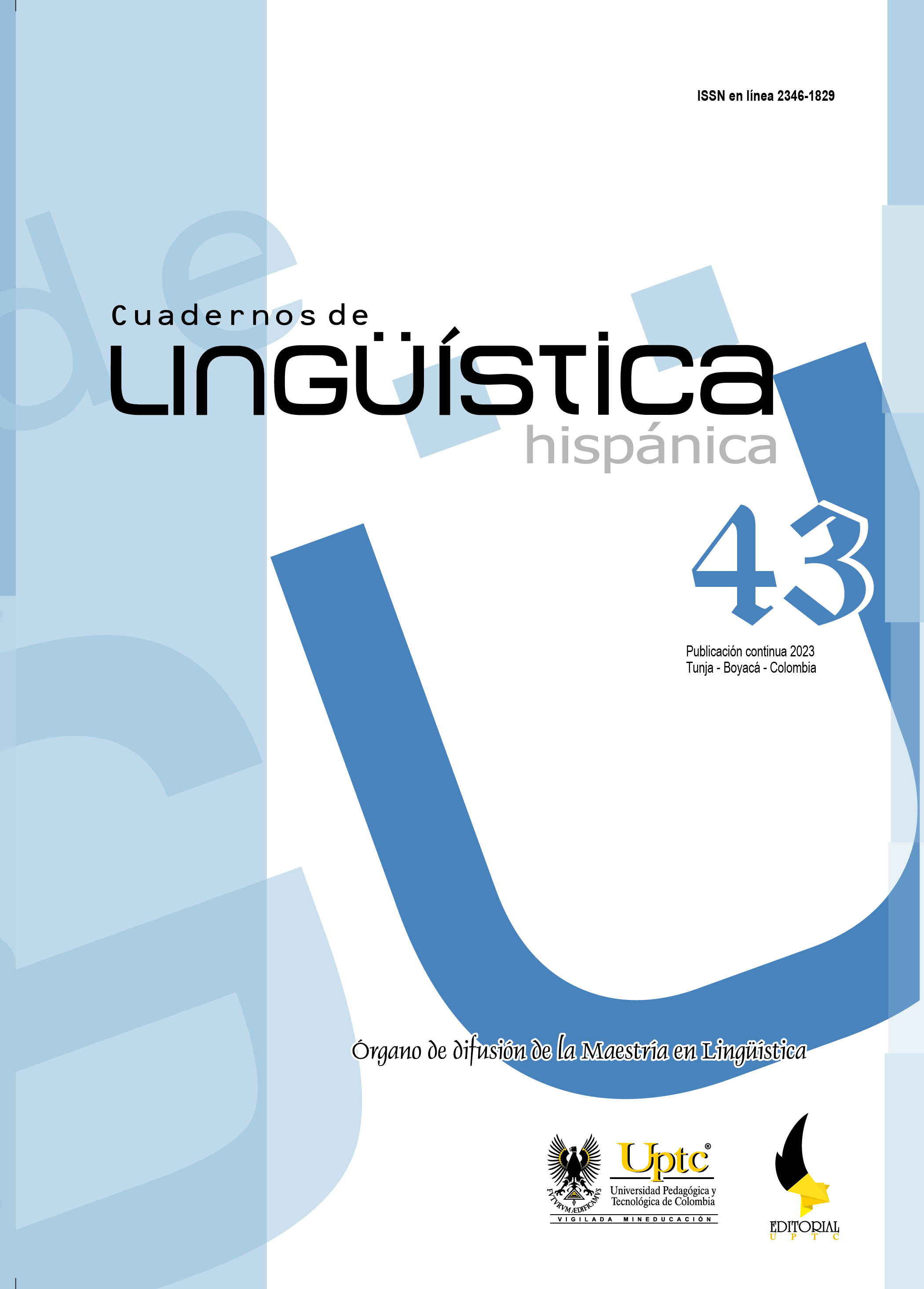Compounds in Colombian Sign Language

Abstract
This article analyzes the formal strategies underlying the formation of compounds in Colombian sign language, based on a corpus collected between 2018 and 2022 with deaf signers from Medellín, Colombia. It is a descriptive study that compares compositional patterns with those of other sign languages, such as those presented in Pfau (2016) and Meir et al. (2010). In the corpus, we find sequential and simultaneous compounds. Sequentials may present changes in their constituents, which imply a formal fusion, such as the shortening of one of the signs, the anticipation of the passive hand, and the extension of the passive hand, a strategy not usually mentioned in the literature. We have noted the existence of endocentric and exocentric compounds. In sequential endocentrics, the core is performed first and then the determinant. In simultaneous endocentrics, the tendency observed is that the passive hand performs the core and the active hand performs the determinant.
Keywords
Colombian sign language, morphology, composition, sequential compounds, simultaneous compounds
References
- Barreto, A. G. & Robayo, C. A. (2016). Neologismos en lengua de señas colombiana (LSC): desafíos entorno a la planificación lingüística en comunidades sordas. Glottopol, Revue de Sociolinguistique en Ligne, (27), 65-80. http://www.univrouen. fr/dyalang/glottopol
- Chelliah, S. L. & De Reuse, W. J. (2011). Handbook of Descriptive Linguistic Fieldwork. Springer. DOI: https://doi.org/10.1007/978-90-481-9026-3
- Dieck, M., Naranjo Orozco, L. F. & Gómez Jiménez, Y. J. (en prensa). La negación en la lengua de señas colombiana. En S. Chávez Fajardo & J. L. Ramírez Luengo (eds.), Panorama de estudios actuales del español en América. Fondo Editorial de la Facultad de Comunicaciones y Filología de la Universidad de Antioquia.
- François, A. & Ponsonnet, M. (2013). Descriptive Linguistics. In Theory in Social and Cultural Anthropology: An Encyclopedia (pp. 184-187). Sage.
- Haspelmath, M. (2009). Framework-free Grammatical Theory. In B. Heine & H. Narrog (eds.) The Oxford Handbook of Grammatical Analysis. Oxford University Press. DOI: https://doi.org/10.1093/oxfordhb/9780199544004.013.0014
- Haspelmath, M. (2014). Descriptive Hypothesis Testing is Distinct from Comparative Hypothesis Testing: Commentary on Davis, Gillon, and Matthewson. Language 90(4), 250-257. DOI: https://doi.org/10.1353/lan.2014.0071
- Himmelmann, N. P. (1998). Documentary and Descriptive Linguistics. Ruhr- Universität Bochum. http://www.hrelp.org/events/workshops/eldp2005/ reading/himmelmann.pdf DOI: https://doi.org/10.1515/ling.1998.36.1.161
- INSOR e Instituto Caro y Cuervo (2006). Diccionario básico de la lengua de señas colombiana. https://www.insor.gov.co/descargar/diccionario_basico_ completo.pdf
- Liddell, S. K. & Johnson, R. E. (1986). American Sign Language Compound Formation Processes, Lexicalization, and Phonological Remnants. Natural Language and Linguistic Theory, (4), 445-513. DOI: https://doi.org/10.1007/BF00134470
- Meir, I., Aronoff, M., Sandler, W. & Padden, C. (2010). Sign Languages and Compounding. In Compounding (pp. 573-595). John Benjamins. DOI: https://doi.org/10.1075/cilt.311.23mei
- Naranjo Orozco, L. F. (2019). Procesos morfológicos en la lengua de señas colombiana. [Tesis de doctorado]. Universidad de Antioquia.
- Oviedo, A. (2001). Apuntes para una gramática de la lengua de señas colombiana. Facultad de Humanidades, Universidad del Valle e INSOR.
- Pfau, R. (2016). Morphology. In A. Baker, B. van den Bogaerde, R. Pfau & T. Schermer (eds.) The Linguistics of Sign Languages. An introduction (pp. 197-228). John Benjamins. DOI: https://doi.org/10.1075/z.199.09pfa
- Santoro, M. (2018). Compounds in Sign Languages: The Case of Italian and French Sign Language. In Linguistics. EHESS. https://hal.science/tel-03058785
- Tkachman, O. & Meir, I. (2018). Novel Compounding and the Emergence of Structure in Two Young Sign Languages. Glossa: A Journal of General Linguistics, 3(1), 136. https://doi.org/10.5334/gjgl.632 DOI: https://doi.org/10.5334/gjgl.632
- Tovar, L. (2010). La creación de neologismos en lengua de señas colombiana. Lenguaje, 38(2), 277-312. DOI: https://doi.org/10.25100/lenguaje.v38i2.4913
- Val Álvaro, J. F. (1999). La composición. En I. Bosque & V. Demonte (eds.) Gramática descriptiva de la lengua española (tomo 3). Espasa Calpe.
- Vercellotti, M. L. & Mortensen, D. R. (2012). A Classification of Compounds in American Sign Language: An Evaluation of the Bisetto and Scalise framework. Morphology 22, 545-579. https://doi.org/10.1007/s11525-012-9205-1 DOI: https://doi.org/10.1007/s11525-012-9205-1
